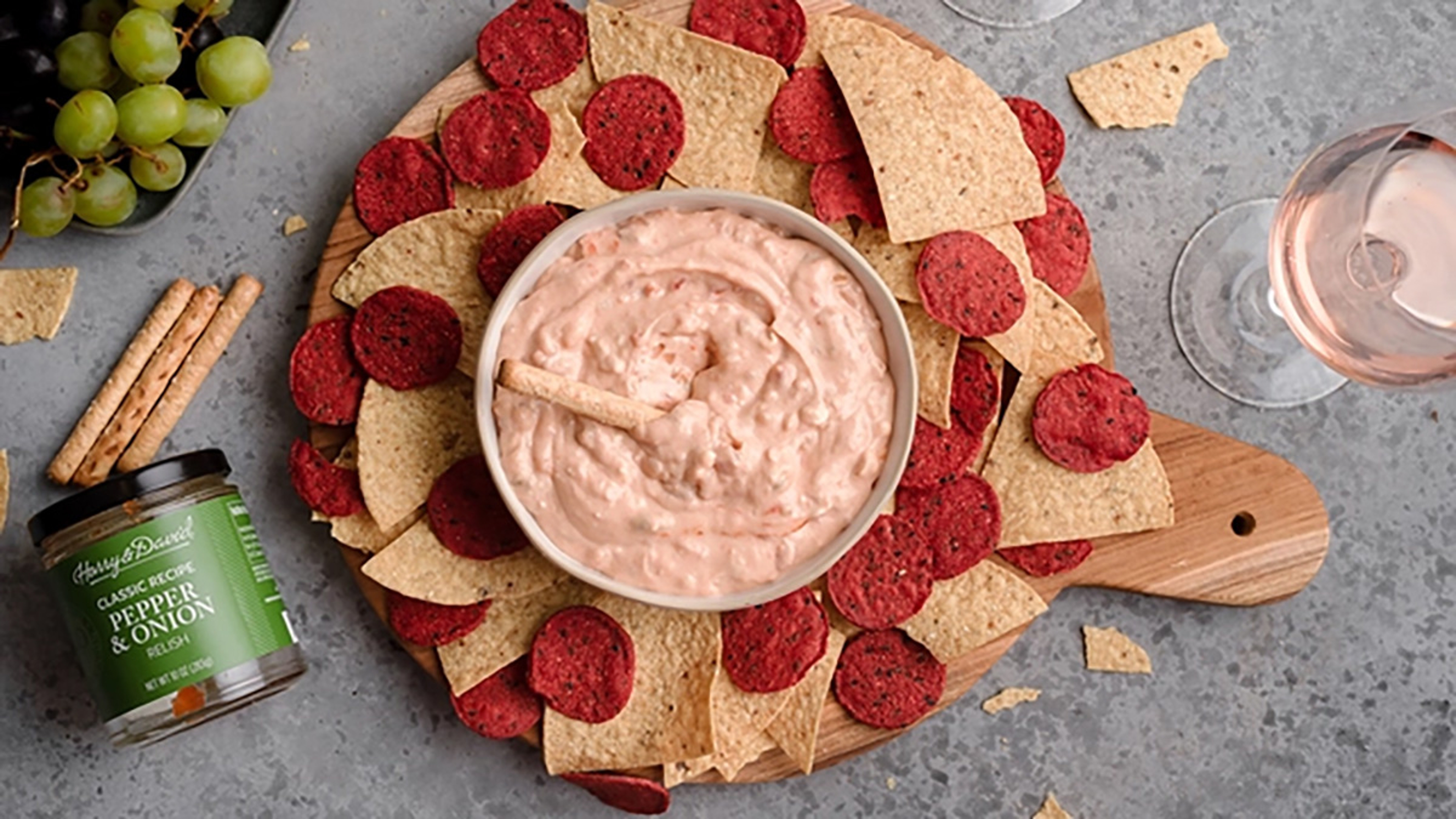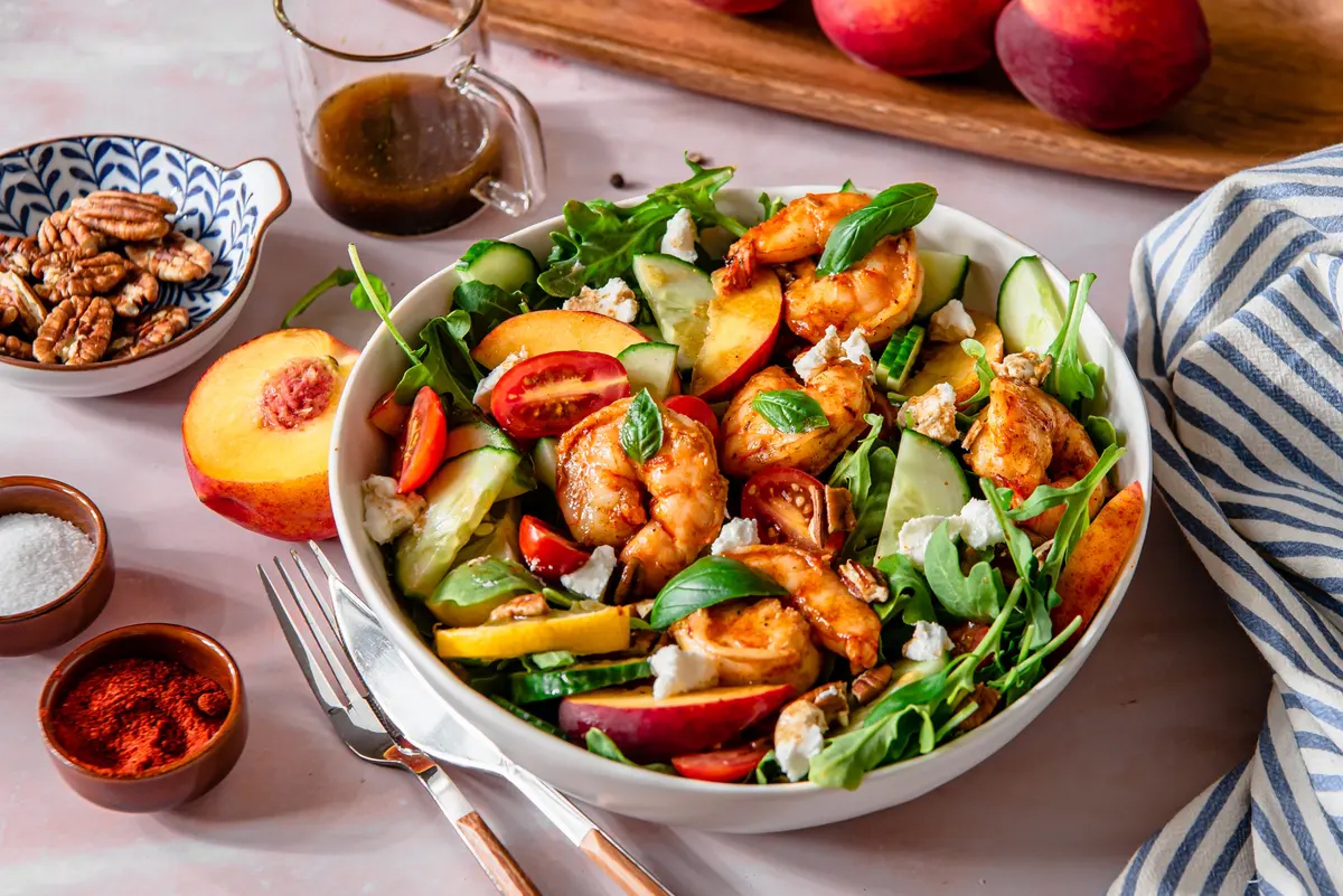Origin of the Bagel: The Hole Story
It's the only food that explains the circle of life.
Oct 08, 2024
Many of our favorite foods have "true" heritage versions, age-old recipes from foreign lands passed down through generations, firmly defended along the way. Most are defined by exact origins or brands of ingredients, specific prep methods, and ways of being served and eaten.
Ironically, most true versions are simple dishes, such as city-style pizzas (New York, Chicago, and Detroit), Mexican (mission-style burritos, tacos de carnitas), Italian (carbonara sauce, handmade pasta), and, perhaps the simplest of all specific eats, the bagel.
The bagel's humble holy origins
In her book The Bagel: The Surprising History of a Modest Bread, journalist and filmmaker Maria Balinska found the earliest relative of the prized doughy "O" to have existed in Central Europe during the Middle Ages. They were in the form, she wrote, of German pretzel bread (shaped as pretzels are today) and traditionally served to monks in monasteries. These holy provisions are thought to have made their way from Deutschland to Poland in the 1300s, in the rucksacks of immigrant laborers.
Polish history tells of locals then modifying the pretzel bread's form to produce smaller, round, single servings called obwarzanek (pronounced obe-var-jon-eck). These pre-bagels, however, were not the ever-present bargain food of modern day. Made with costlier white flour, obwarzanek, which means to "boil" in Polish, were primarily enjoyed by upper and royal classes and not the needy, who were stuck with cheap, gritty rye breads.
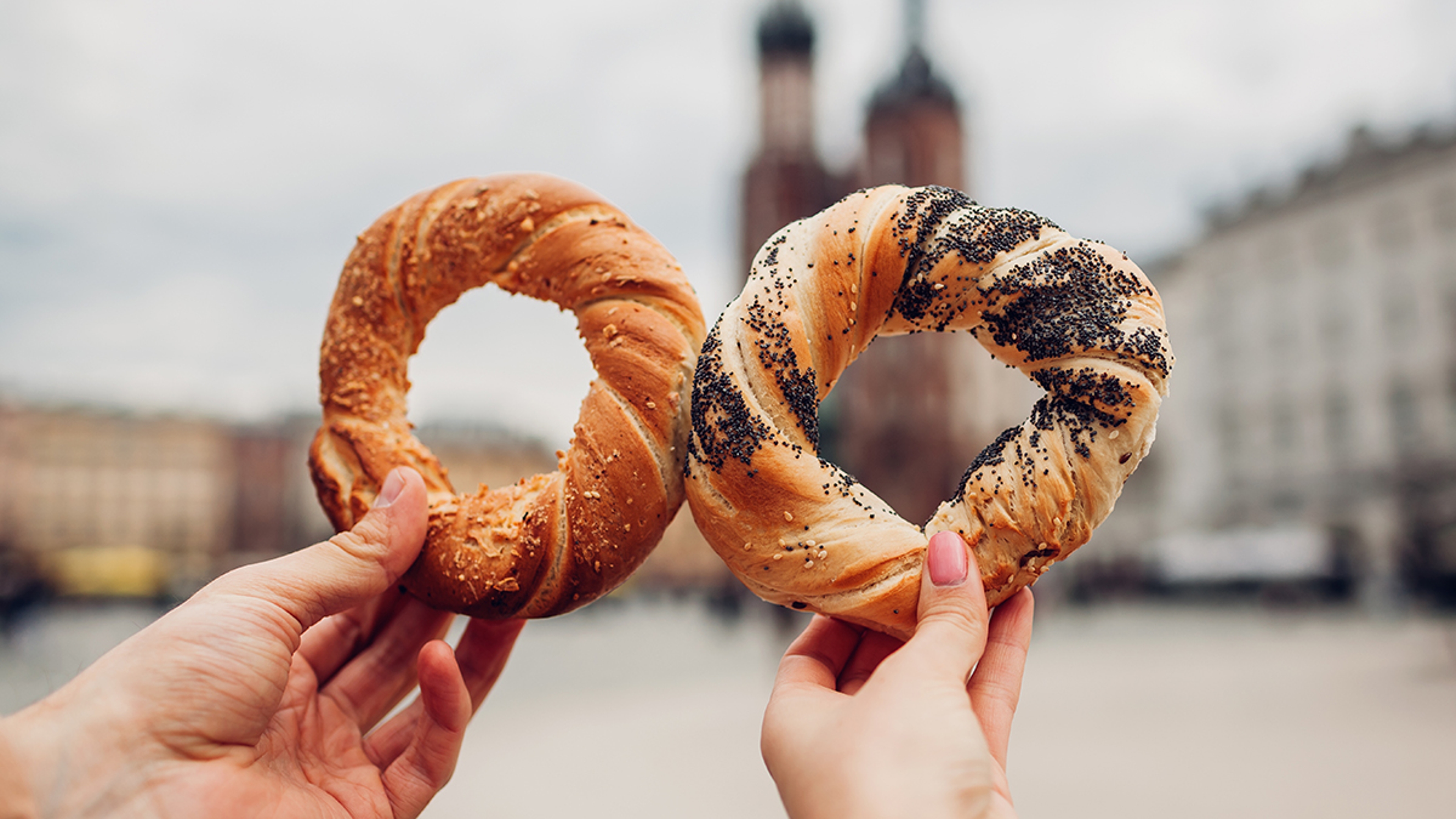
The origin of the bagel we know today dates back to 1683 as a salute to King Jan Sobieski, who had just successfully led Poland against Turkish invaders, all from the back of his favorite horse. To honor the known equine enthusiast, a Polish baker shaped his obwarzanek into circles meant to resemble boot stirrups, the German term for which is "beugel."
Over the next hundred years, bagels grew in popularity, with songs being written and sung about them across the nation. On any given day, Polish citizens of all ages — including infants, who were often given bagels to use as teething rings — could be found with the Sobieski-honored snack in their mouths.
As the 1900s approached, a sizeable population of Jewish Poles immigrated to New York City, taking with them their beloved bread. On Manhattan's Lower East Side, bagels became ever present in curbside markets, hanging by the dozen on strings and poles, making for an easy street food for those of all incomes. New York City bagels have gone on to become an iconic food — and are considered by many to be the best in the United States.
Evolution of a tradition
After the bagel's initial New York City boom, smaller, thinner, and sweeter versions (due to the removal of salt and addition of eggs and sugar to the recipe) were sold in Montreal and then throughout Canada. Different varieties of the American bagel also developed, with ingredients like raisins, seeds, cheeses, onions, and garlic (to say nothing of the famous "everything," which is just what it sounds like).
To accommodate heftier toppings, such as cream cheese and lox, New York bakers began to narrow bagel holes in the 1940s. In the decades that followed, mini bagels, bagel sandwiches, and bagels baked with colored dough for a rainbow effect all entered the American mainstream.
In the late 1960s, a variant called the Jerusalem bagel began to appear throughout the Holy City. Oval shaped, as well as softer, thinner, and sweeter than the traditional kind, this version is traditionally served with za'atar, a spice blend of the namesake herb, salt, sumac, and sesame seeds.
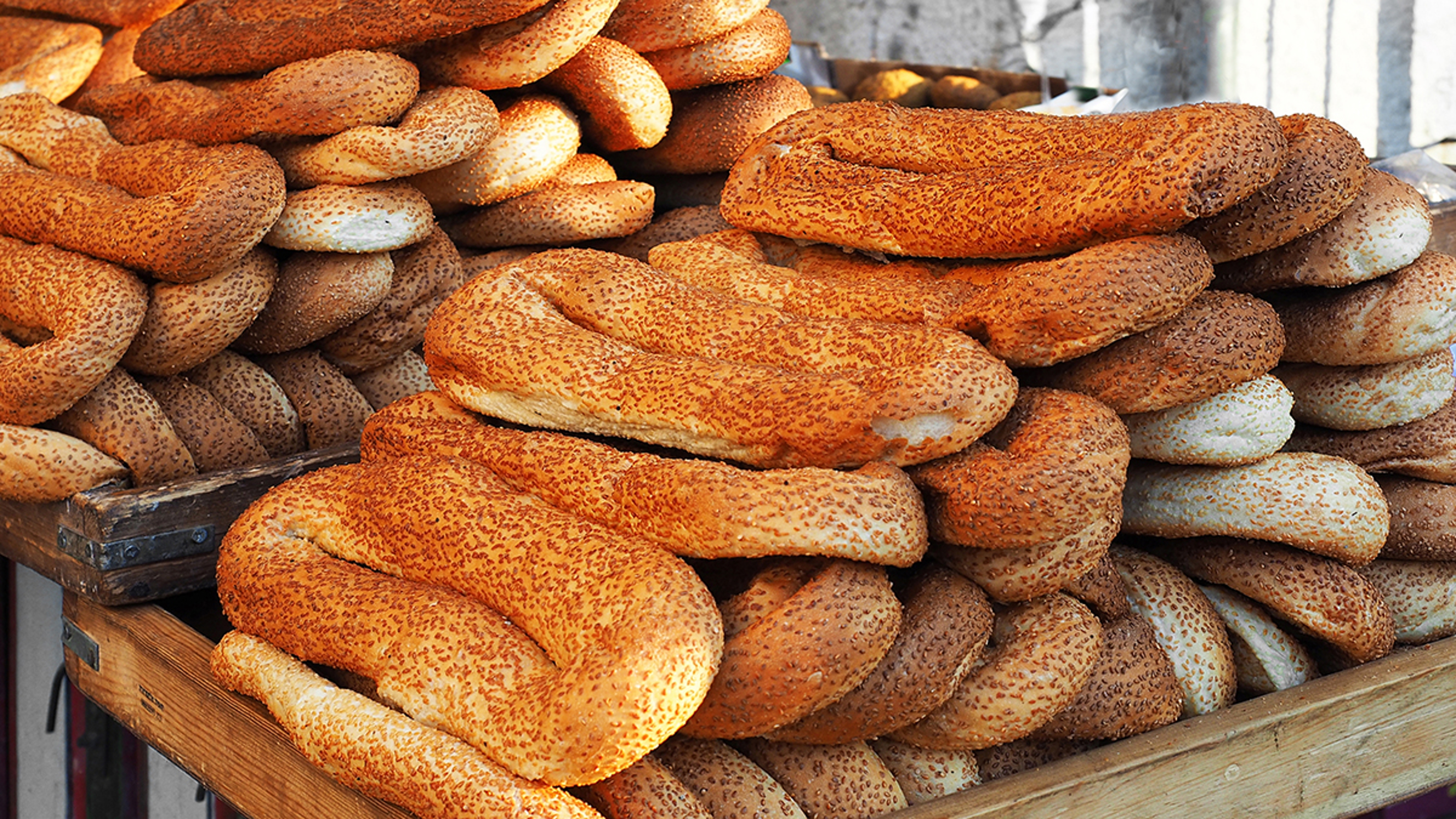
The bialy, a Polish bagel cousin that originated in Bialystok, is essentially a thin roll with a dent in the middle full of cooked onions and poppy seeds. Simply baked, not boiled then baked like a bagel, a bialy's insides feature large puffed air bubbles rather than a doughy texture (though butter, or the beloved lox and cream cheese treatment, can still do wonders).
The bagel's magical recipe
Making bagel dough is as easy as pie (actually, a lot easier!). A few pantry basics are all it takes: real flour (never low gluten or gluten free), yeast, malt, salt, and water. Prep is equally simple: The dough is hand rolled, boiled, and then baked, not fried or put straight in the oven, like donuts or standard bread.
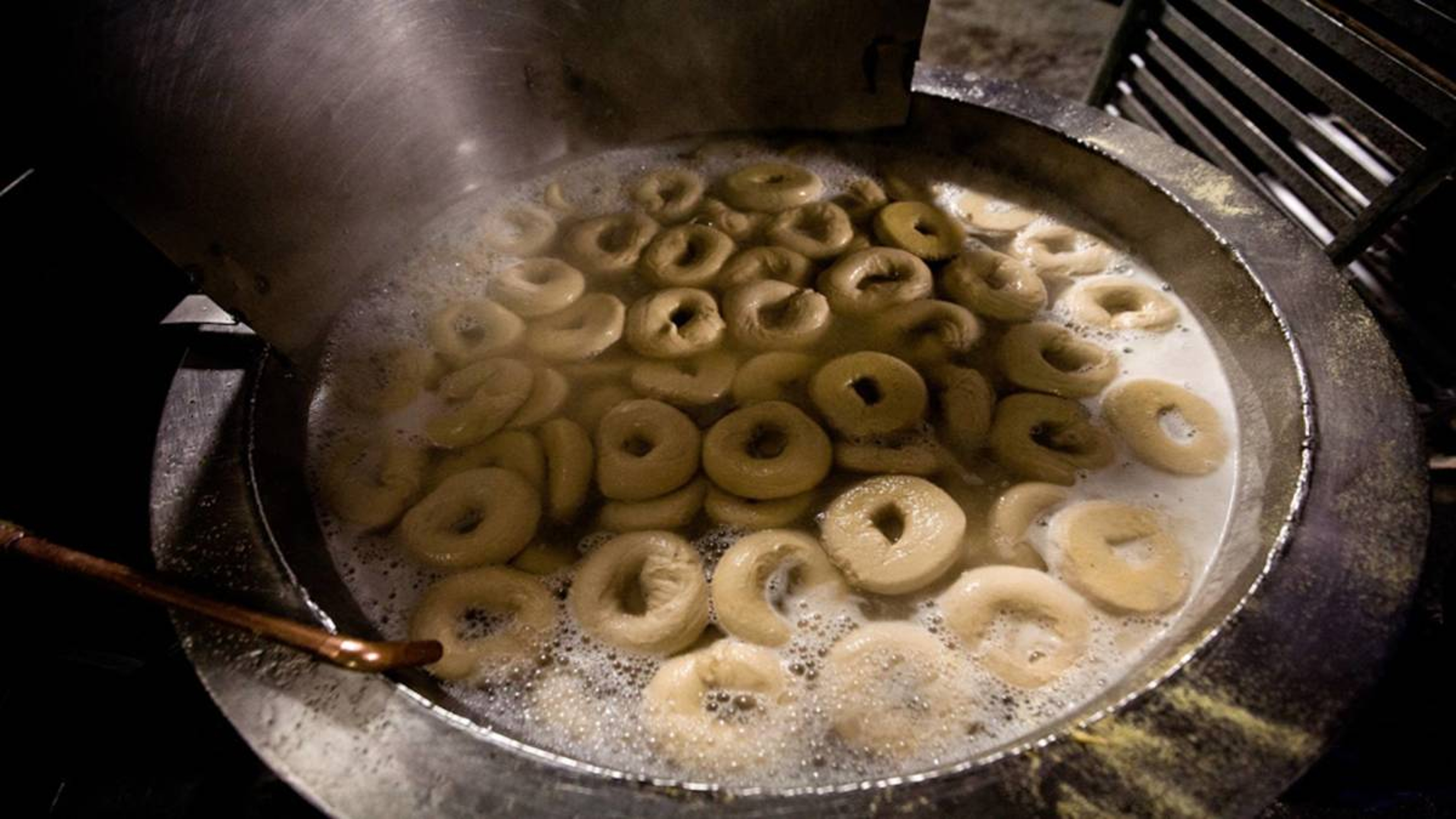
So why are New York City bagels so special?
Some say the softness of the city's water (low magnesium and calcium levels) — a factor that encourages a chewy interior and shiny, crispy bagel outer — is the key to the NYC magic. A test administered by the American Chemical Society confirms the city has wonderfully soft water, but also suggests this may not be the answer, as low levels of these chemicals are thought to affect only a bagel's texture, not its taste.
When compared with other bagel production processes across the world, New York's is considered the best. Its historically mandatory boiling-before-baking process, when combined with its soft water, and a consistent proofing of yeast (testing the vigor and life of yeast before baking with it) is what forms the perfect five-borough bagel equation.
The hot bagel debates
Obviously, a bakery fresh bagel is ideal, but some people can only get their hands on frozen ones. So, how to prep one? Davidovich bagels (which director of business development for Davidovich Bakery Marc Fintz says should be refrigerated, or sliced and then frozen, if not consumed immediately) come with these firm, clear instructions: "Thaw on the counter for about 25 minutes, then slice and toast to your liking, or enjoy as is! DO NOT MICROWAVE as this damages the qualities of the bagel!"
Though toasting bagels has become the norm (and probably is a wise choice for defrosts), sticklers absolutely shun the idea of toasting a fresh one. After all, why mess with baked perfection? Another common practice involves scooping dough out of the inside of each bagel half, to make lanes for toppings. Bagel fanatics shudder at the thought (it's less carbs, right?), but it does open up more room for spreads.
Schmear campaign
To aficionados, eating a bagel dry is sacrilege; in their eyes, those who go the au naturale route might as well eat the end piece of a bread loaf and call it a morning. In much of bagel-dom, a "schmear" — the Yiddish term for "smear" or "spread" — of one topping or another (usually a thick layer) is an absolute necessity.
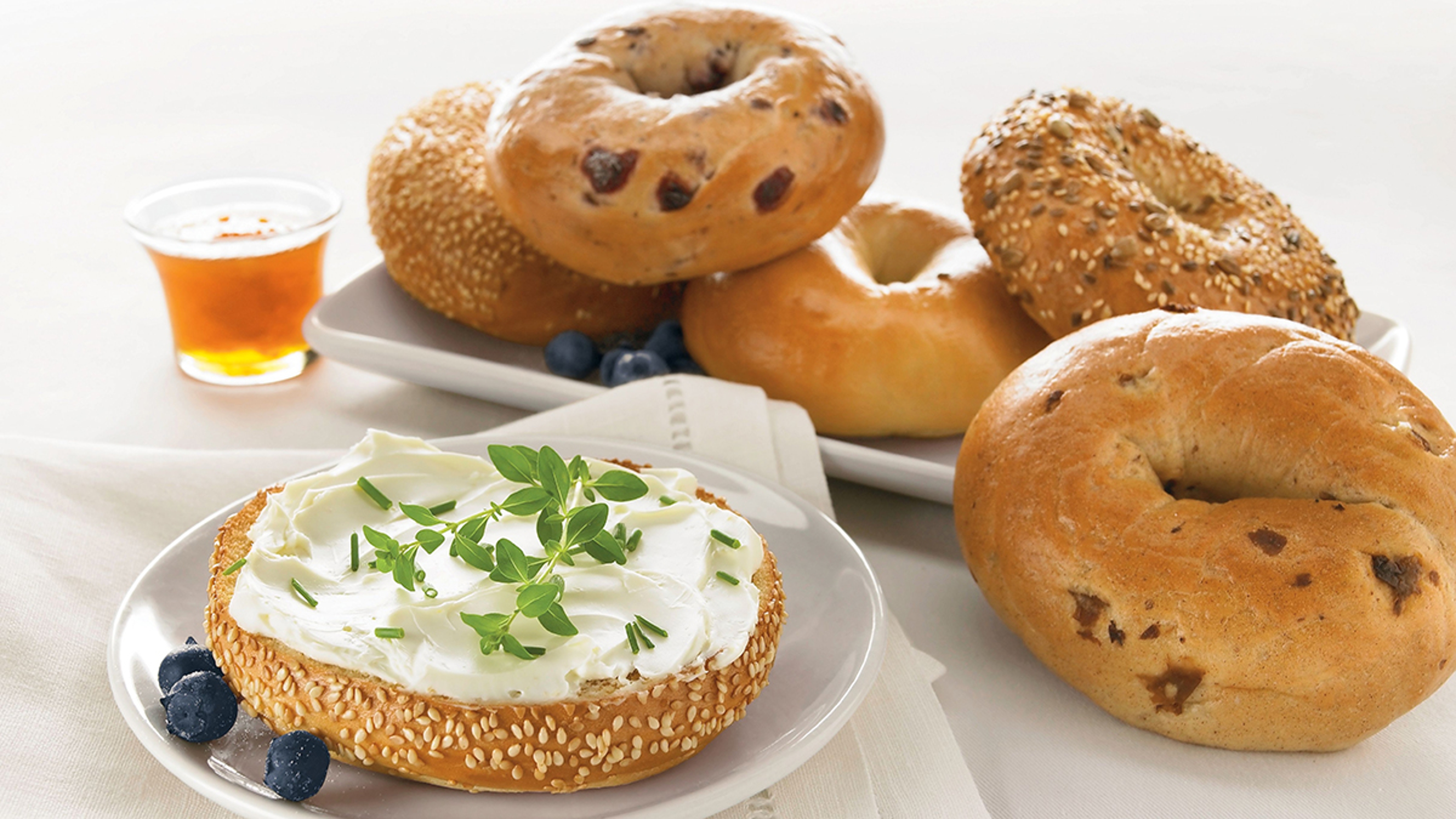
Butter is basic, jam is progress, and while cream cheese is the standard, nothing crowns a bagel like lox — thin-sliced, cured, and cold-smoked salmon — a sliver of tomato, a dotting of capers, and slices of raw red onion. The true bagel grail, however, remains cream cheese and lox. There's also smoked salmon, which is not the same and actually very different.
For an experience more sweet than savory, chocolate hazelnut spread, peanut butter, or candied fruits may do the trick. And for a zest-fest, pimento cheese — a creamy blend of mayo, mini red peppers, and cheddar — is a great option.
Bring New York bagels into your home
Once available only in the bagel promised land of the Big Apple, the coveted, classic Davidovich bagel is now procurable through Wolferman's in multiple flavors and combination packages, including essentials lox and cream cheese.
Featured in publications like Time, The Wall Street Journal, and Forbes, as well as programs like ABC News and The Jon Stewart Show, the artisan Davidovich bagel is based on a family recipe and bake process that founder Gene Davidovich inherited from his grandmother Zoya.
Unlike any other wholesale American bagel, Davidovich bagels are hand rolled and prepared in a manner treasured by New Yorkers, says Fintz: a kettle boil, followed by a bake on wooden planks, turned by hand in stoves from the 1950s. The result is a craft classic unmatched by any modern, machine-automated bagel factory.
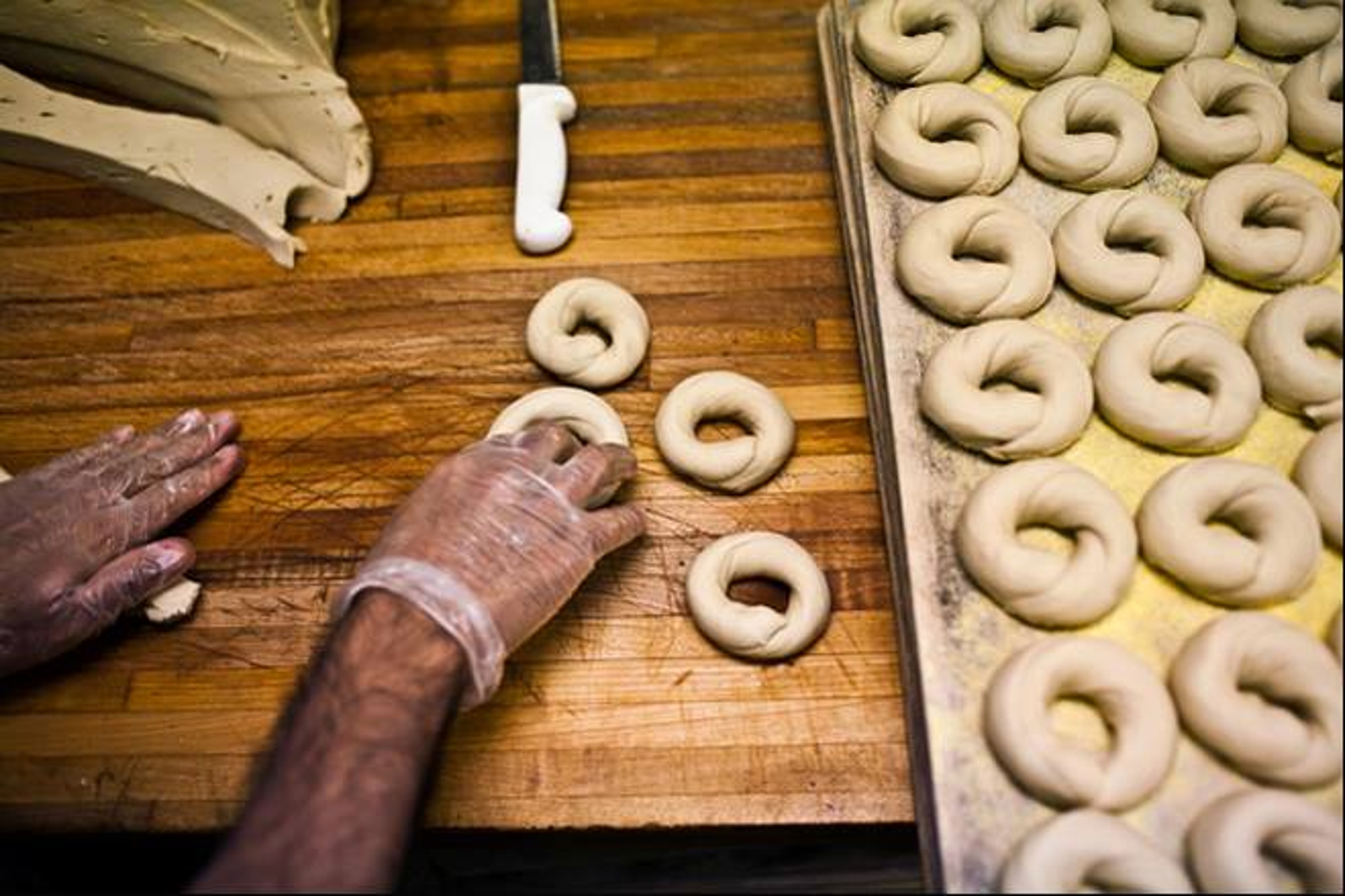
Further keys to the brand's bagel quality, Fintz points out, include the use of "unbleached flour, with no bromates (an oxidizer typically found in water) or artificial chemicals," and that "every bagel sits for 12 to 18 hours after rolling to help enhance the flavor profile."
Fintz also mentions that special techniques, such as the settling-after-rolling example, are what set Davidovich bagels apart — and unite the brand with those it serves. "The goal has always been to bring the authentic, artisan baked goods from the Davidovich family kitchen to our customers' family kitchens — the bagel is our connection to families all around the world."
.svg?q=70&width=384&auto=webp)





